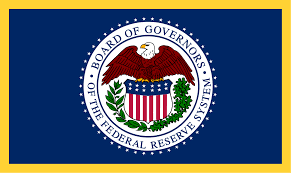MarketWatch
The economy is likely to continue to grow so that the labor market heals and inflation averages above 2% for long enough so that by the end of 2022 the U.S. central bank can begin raising interest rates early in 2023, said Federal Reserve Vice Chairman Richard Clarida on Wednesday.
Given that forecast “commencing policy normalization in 2023 would…be entirely consistent with our new flexible average inflation targeting framework,” Clarida said in remarks to the Peterson Institute for International Economics.
Clarida didn’t dwell on the Fed’s looming decision on when and how to start to slow down the massive $120 billion in monthly asset purchases.
He said the Fed would continue to examine tapering “in coming meetings.” The plural of the word “meeting” might be important as some Fed officials are agitating for a decision at the next meeting in late September.
In the question-and-answer session, Clarida said that if the economy evolves as he expects, “I could certainly see myself supporting announcing a moderation in the pace of purchases later this year.”
“We will provide advance notice before making any changes to our purchases,” he added.
Clarida focused more on when the Fed’s might raise interest rates.
Clarida said he agreed with Fed Chairman Jerome Powell’s comments last week that a hike in interest rates isn’t on the Fed’s radar screen.
The central bank has adopted a new framework, saying it would aim to achieve inflation “moderately above” 2% for some time so that in the longer-run inflation would average 2%. The central bank also wants to achieve “maximum employment.”
Clarida said that these conditions for the first rate hike will be met “by year-end 2022” allowing for the first move in 2023.
Clarida said he expects inflation to be above 2.1% in 2022 and 2023. Combined with the spike in inflation this year, this would satisfy the Fed’s condition for inflation above 2% for some time.
Seven Fed officials have forecast an earlier liftoff for raising interest rates, with the first rate hike in 2022. The Fed’s so called dotplot forecast projects a majority of the 19 top officials see two interest rate hikes by the end of 2023.
The Fed vice chairman said he sees the recent rise in inflation as “transitory.” But he added that the risks of higher inflation are greater than the risks of low inflation.
If core PCE inflation remains above 3%, that would be higher than a “moderate” overshoot of the Fed’s 2% target that the central bank is aiming for, Clarida said. But he didn’t specify if any policy action would be needed.
Core PCE was running at a 3.5% rate in June, the highest in 30 years, but Clarida said he favors a different measure — core PCE starting in February 2020 — to smooth out any base effects from the pandemic.
This measure of inflation is running at a 2.7% rate through June 2021 and is projected to remain above 2% in 2022 and 2023, he said.
Stocks retreated after Clarida’s comments with the Dow Jones Industrial Average DJIA, -0.78% down 233 points in late morning trading. The yield on the 10-year Treasury note moved up sharply to 1.21%, still well below the 1.75% rate seen in late March.
Clarida said he was surprised by the size of the decline in bond yields since the spring. He ducked questions on the cause of the move.
“There are a lot of things going on, I’m looking at it closely,” he said.














